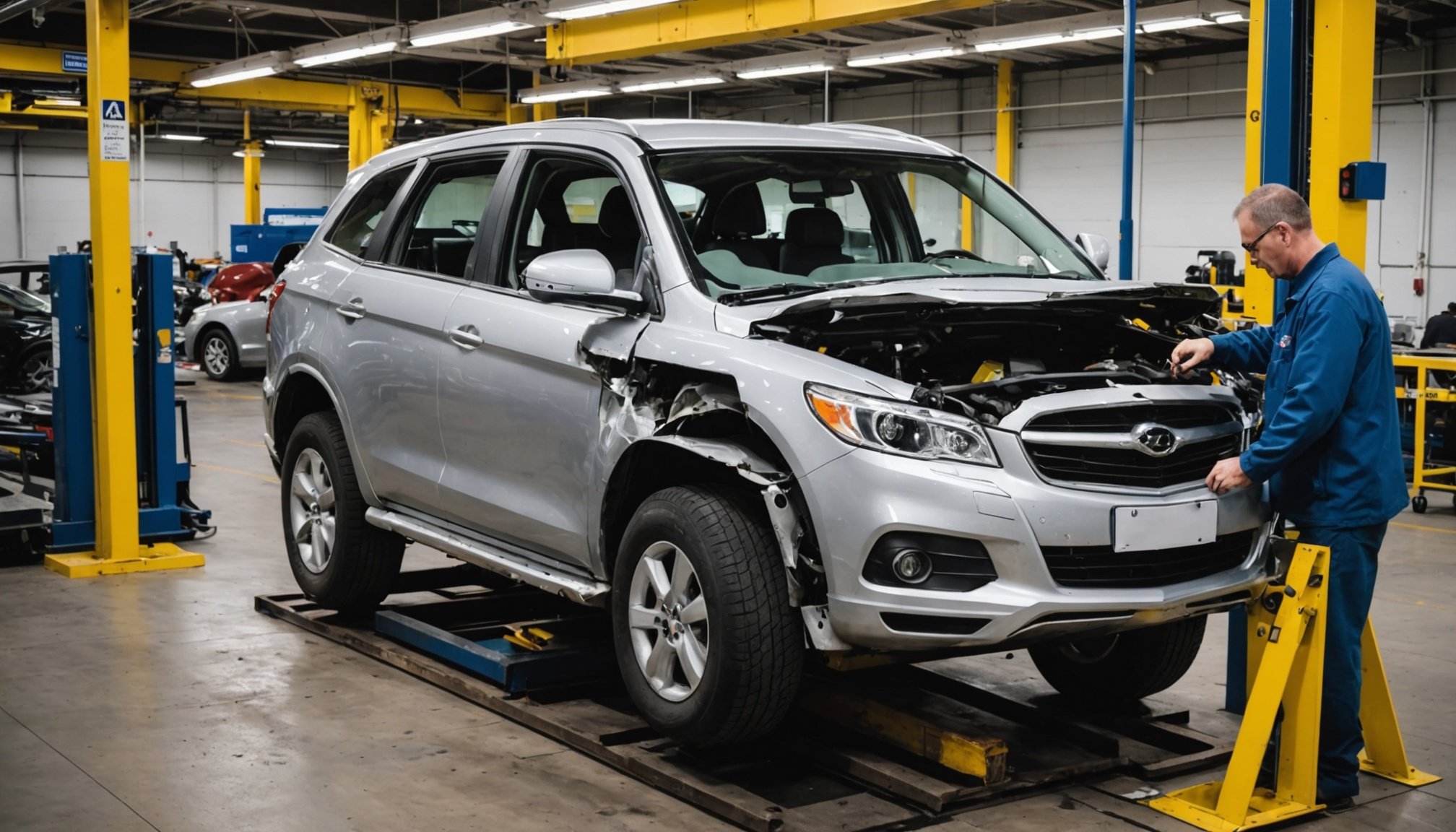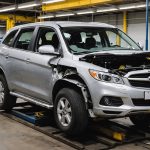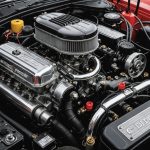Understanding Vehicle Frame Integrity
Maintaining vehicle frame integrity is crucial for both safety and vehicle performance. The frame acts as the backbone, supporting various components like the engine, suspension, and transmission. A compromised frame can lead to problems with alignment and handling, and even impact the effectiveness of safety features like airbags.
During accidents, several types of damage can interfere with vehicle frame integrity. Common structural damages include bending, twisting, or fracturing. A bend typically occurs when the impact force is absorbed unevenly, while twisting often results from multi-directional impacts. These damages need a thorough structural assessment to determine the extent of compromise and appropriate repairs.
Also to read : Essential Tips for Safeguarding Your Vehicle”s Rollover Protection System
Frame integrity doesn’t only influence the car’s structure itself but affects how other parts of the vehicle function. A misaligned frame can lead to uneven tire wear, poor fuel efficiency, and decreased aerodynamics. These effects underscore the importance of regular checks and immediate repairs after any accident damage.
Understanding and addressing issues in vehicle frame integrity ensures that other vehicle components operate correctly and efficiently. Regular structural assessments are essential for identifying hidden damage that might not be visible to the untrained eye. Thus, maintaining an uncompromised frame is not just recommended; it’s vital for your vehicle’s long-term performance and safety standards.
Additional reading : Maximize Your Vehicle”s Safety: A Guide to Fine-Tuning Your Automatic Emergency Braking System
Techniques for Assessing Frame Integrity
When ensuring a vehicle’s structural soundness, utilising assessment techniques such as frame inspection is paramount. Various evaluation methods are deployed to detect damages and maintain the vehicle’s robustness.
Visual Inspections
Begin with comprehensive visual inspections. This initial step allows for the identification of any visible damage, such as dents or rust, which may compromise frame integrity. This visual check is foundational, as it can highlight overt defects before diving into more intricate evaluation techniques.
Measuring Techniques
Progressing beyond visuals, precise measuring techniques are essential. Accurate measurement of critical dimensions can determine any misalignments within the frame. Employ tools like calipers or rulers to ensure the parts’ alignment matches the manufacturer’s specifications.
Using Diagnostic Tools
Utilising advanced diagnostic tools takes frame inspection to the next level. Instruments such as frame machines and laser measuring systems provide highly accurate evaluations. These tools can uncover less obvious issues, providing precise data for vehicle alignment. Employing such specialized equipment ensures that even the smallest imperfections are detected and corrected, maintaining the frame’s integrity.
Incorporating these multifaceted approaches ensures thorough assessment and maintenance of the vehicle’s structural soundness. These methods effectively prevent future complications, thereby preserving the vehicle’s overall safety and performance.
Step-by-Step Guide to Evaluation
A step-by-step evaluation of a frame involves a meticulous and organised process that ensures nothing is overlooked. Begin with a visual inspection—examine the entire frame surface under good lighting. Look for visible damage such as cracks, bends, or corrosion. This visual assessment sets the foundation for identifying potential problem areas that may require further technical evaluation.
Following the initial inspection, proceed with a technical assessment. Use appropriate tools like calipers and micrometers for precise measurements of frame thickness and alignment. This part of the inspection procedure involves checking for structural integrity and ensuring that all angles and joints align with manufacturing specifications.
During the assessment, documentation plays a crucial role. Take clear, detailed photos of any damages and discrepancies found. Accompany the images with notes specifying the location, size, and potential impact of each issue. This not only aids in tracking repairs but also serves as an invaluable record for insurance claims or resale value discussions.
Incorporating visual and technical methods ensures a comprehensive understanding of the frame’s condition. Remember, a well-documented assessment process can enhance the reliability of your conclusions and facilitate future evaluations, making it a cornerstone of your maintenance strategy.
Safety Precautions
Industry professionals emphasize that implementing safety precautions during vehicle inspections is paramount. Donning essential safety gear is a first line of defense against potential injuries. Inspection safety requires the use of gloves to protect hands from sharp edges, goggles to shield eyes from debris, and steel-toed shoes to protect feet against heavy parts or tools.
When dealing with damaged vehicles, taking repair safety measures is critical to prevent exacerbation of injuries. It’s advisable to keep a safe distance from unstable components and use tools specifically designed for stabilization. For those involved in the repair process, using hydraulic lifts or jacks to safely elevate the vehicle is essential to avoid compression-related accidents.
Awareness of the inspection environment is crucial. Unattended sharp edges pose significant risks; therefore, performing meticulous visual checks prior to any contact is recommended. Additionally, be on the lookout for potential hazards such as leaking fluids or exposed wiring that could cause slips or electrical shocks.
Conducting inspections and repairs with diligence, and adhering to safety precautions, not only prevents harm but also ensures professionalism and efficiency. By fostering an environment attentive to hazards, individuals maintain their well-being while executing their responsibilities effectively.
Common Issues and Solutions
Understanding car frame damage is crucial, as it can lead to significant structural issues. Identifying damage early and knowing whether to repair or replace can save time and costly repairs in the future.
Identifying Common Frame Damage
Recognizing signs of damage is the first step. A bent or twisted frame typically results from major collisions. Some tell-tale signs include uneven tire wear, gaps between panels, or doors that do not close properly. More subtle indicators might be vibrations or pulling when driving. If you suspect damage, addressing these issues promptly can prevent further complications.
Repair Techniques
Repair methodologies vary based on the extent of the structural damage. Common repair approaches include welding and realignment. Welding can restore strength to damaged areas, while realignment ensures that all parts fit precisely, maintaining vehicle balance. Skilled technicians use these methods to reverse or mitigate frame damage effectively.
When to Replace Instead of Repair
Sometimes replacement might be a more viable option than repair. If the damage compromises safety or if repairs cost more than a replacement frame, replacement becomes necessary. Signs like severe corrosion or foundational cracks suggest that repairs may not suffice, prompting a replacement instead. Evaluating these factors helps determine the best course of action for ensuring vehicle safety and integrity.
Real-World Examples and Case Studies
In the realm of vehicle assessments, real-world case studies provide invaluable insights. They highlight not only the potential for successful frame repairs but also underscore the risks associated with overlooking frame integrity.
Consider the case study of a renowned fleet management company. Faced with fleet-wide frame integrity issues, the company initiated comprehensive vehicle assessments. It became apparent that neglected repairs had significantly exacerbated wear and tear, leading to costly downtimes. Swift action was necessary: by prioritising frame repairs based on individual vehicle assessments, the company strategically reduced both costs and operational disruption.
Lessons learned from the frame integrity assessments were clear. Firstly, they illuminated the importance of regular assessments to preclude severe damage. Even minor frame misalignments, if left unaddressed, can escalate, impairing vehicle performance and safety. Secondly, the case demonstrated the financial impact of preemptive repairs versus delayed action.
To further illustrate the real-world applications, a public transportation entity’s scenario can be examined. Through their documentation of frame repairs on buses, it was shown that systematic monitoring and maintenance avert service interruptions and passenger risks. Real-world experience underscores the importance of periodic evaluations, ensuring vehicles remain in peak condition and providing a foolproof travel experience.











